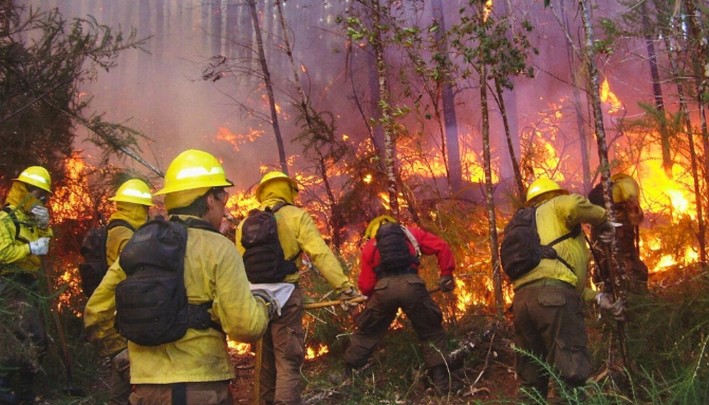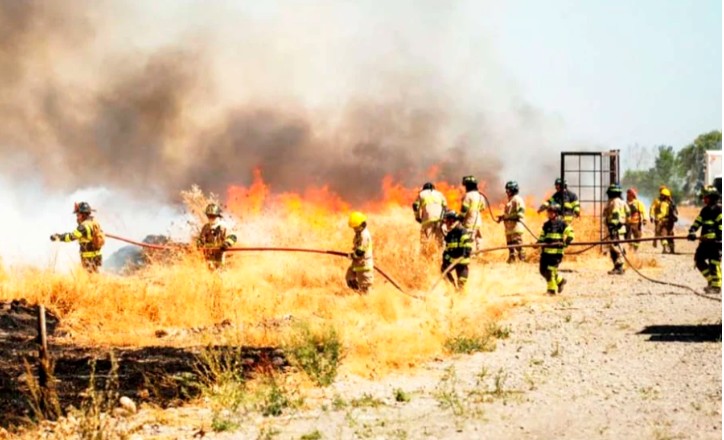Experts Explain the Health Effects of Wildfire Smoke
In early February 2023, the skies of the Biobío province were covered by a thick layer of smoke due to the wildfires affecting the area, causing devastating effects not only on the environment. These disasters can also generate harmful repercussions for people, especially those with chronic illnesses.
In this context, two pulmonology specialists from the "Dr. Víctor Ríos Ruiz" Healthcare Complex in Los Ángeles explained the effects that wildfire smoke can have on people's health and provided recommendations to mitigate its consequences.
Regarding the damage caused by exposure to wildfire smoke, Dr. Rodrigo Osses, a pulmonologist at the Undifferentiated Adult Cost Center of CAVRR, noted that several factors must be considered.
Among them are what is burning, the level of exposure to smoke, and the susceptibility of the affected individuals.
"Regarding what is burning, a wildfire is composed of various substances: gases and small particles emitted by the materials in combustion. Among these particles are PM 2.5, produced by burning wood, grass, or vegetation. They can also be generated by the combustion of construction materials, industrial materials, or hydrocarbons. All these elements can cause damage to varying degrees, depending on factors such as exposure level, proximity to the fire, and the distance particles are carried by the wind," explained the specialist.
He also added that a person does not necessarily need direct contact with the smoke to suffer its adverse effects. The haze generated by the fire should also be considered, as it can affect even those far from the source, especially individuals with preexisting health conditions.
WHO IS MOST AT RISK FROM SMOKE?
Osses explained that everyone exposed to particles from a wildfire faces some level of risk.
"While all may experience symptoms or damage related to smoke, there are higher-risk groups: older adults, pregnant women, children, and people with preexisting respiratory or cardiovascular diseases," detailed the pulmonologist from the "Dr. Víctor Ríos Ruiz" Healthcare Complex.
According to the specialist, symptoms vary depending on several factors but may include coughing, difficulty breathing, eye irritation, throat irritation, nasal congestion, chest pain, and headaches.
Additionally, "patients with chronic conditions, such as asthma or chronic obstructive pulmonary disease, may experience decompensation," the expert added.
For this reason, he urged chronic patients to plan with their treating physicians the measures to take in case of a crisis. This includes preparing for such emergencies. "For example, people with respiratory diseases who use inhalers should have them available, both for regular treatment and emergencies," he explained.
HOW TO PREVENT DAMAGE
On how to prevent the adverse effects of smoke, Dr. Jury Hernández, a pediatric pulmonologist and head of the Undifferentiated Pediatric Cost Center at the Los Ángeles Healthcare Complex, recommended:
Keep windows closed and avoid exposure to smoke during peak fire intensity.
If staying indoors is not possible, use N95 masks, as they filter small particles. "Common masks are not effective; they must be N95 to prevent particles from reaching the respiratory system," Hernández explained.
Use air conditioning or humidifier filters if staying indoors. "Although not always available, air conditioning systems with clean and adequate filters are a good alternative," he noted.
Be aware that hot air can cause burns in the respiratory tract, especially for those working directly in firefighting.
Patients with underlying lung conditions should take extra precautions to avoid smoke exposure and prevent decompensation.
Source:La Tribuna

















